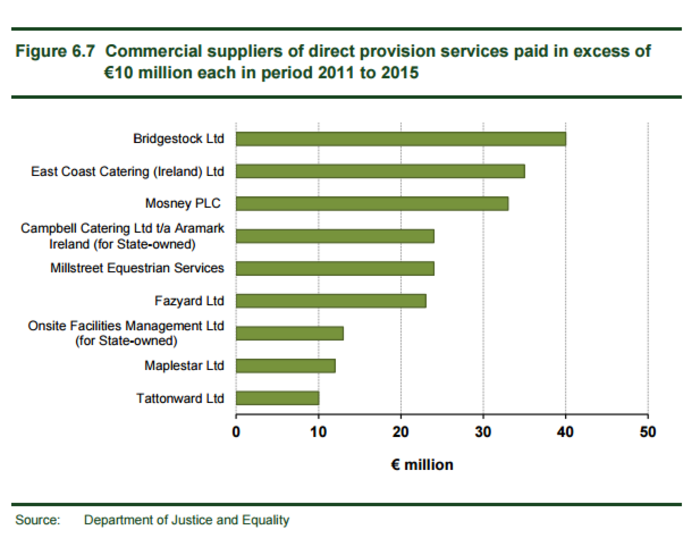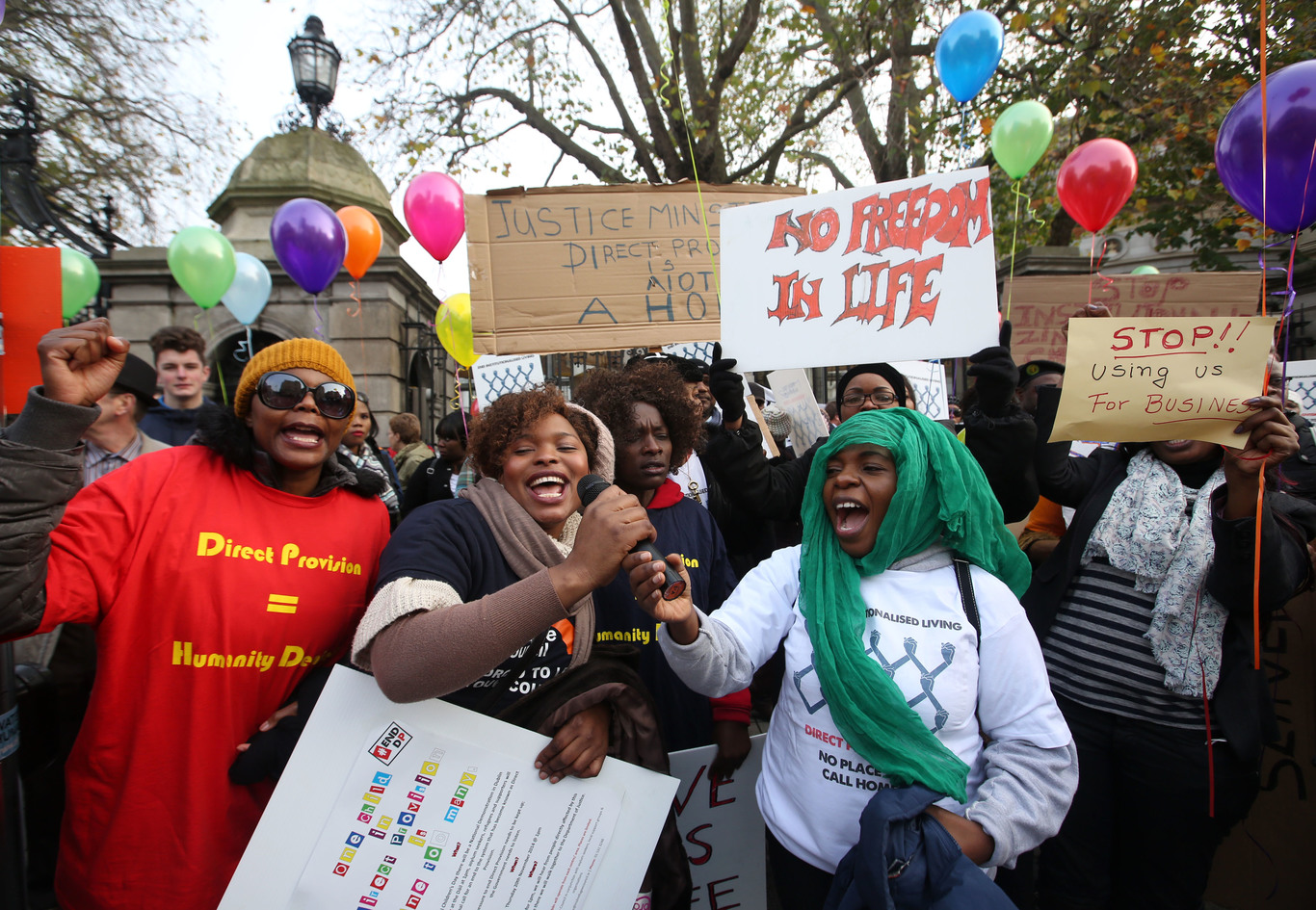Nine companies were paid more than €10m each for providing direct provision centres
Commercial businesses behind centres were paid over €250m between 2010 and 2015.
SOME NINE COMPANIES were paid more than €10 million each to operate direct provision centres in the five-year period between 2010 and 2015.
That is according to a report carried out by the Comptroller and Auditor General (C&AG) – a government spending watchdog – which found that commercial providers of centres were paid a total of €251 million over the five years to 2015.
The organisation said that as of December 2015, there were 35 direct provision centres with capacity to accommodate over 5,400 people.
Seven are state-owned with two companies contracted to provide services. The other 28 centres are owned and operated by 22 commercial suppliers.
The majority of the centres were found to be premises that were originally designed and used for other purposes, such as former hotels or boarding schools. Three centres were purpose-built.
Roscommon-based Bridgestock was found to have received the most during the five-year period, receiving about €40 million from the state.

The C&AG also raised concerns about how the Department of Justice awards contracts to operate direct provision centres.
Concerns
It said that instead of using a “formal competitive processes” to decide who the contracts are awarded to, it uses its website to seek ‘expressions of interest’.
It said that the department then negotiates a price with selected providers and agrees a contract.
However, the C&AG found that the department did comply with key requirements of the negotiated procedure, such as publishing award criteria and award notices
The watchdog said that not sticking to the formal competitive procurement processes “increases the risk that the best price and quality of accommodation and services is not being obtained”.
It added: “While it is the department’s view that the procurement method used was equivalent to the negotiated procedure provided for in EU rules, the circumstances permitting recourse to that procedure do not appear to exist and certain procedural requirements were not observed.
“This could potentially leave the department open to claims.”
Increased demand
The report quoted the Department of Justice as saying that “in an ideal world there would be more open procurement”.
The department said that due to a decrease in demand, “no new advertisements were published between 2009 and July 2015″.
“At that stage, demand was such that there was a real danger that the existing stock of places in direct provision would not meet requirements,” it said.
“For example, the number of asylum seekers increased by 1,000 in the four-month period from April to August 2015, and by a further 400 in September 2015.
“This increase demanded an urgent response which resulted in the department opening a new centre and managing its bed capacity across all other centres.”
It added: “The alternative to this negotiated process is to leave asylum seekers who by definition are vulnerable persons, homeless while the department goes through a lengthy procurement process.”






